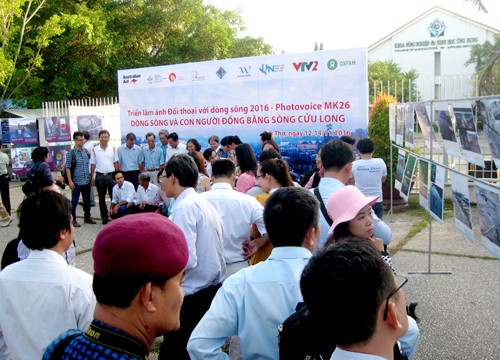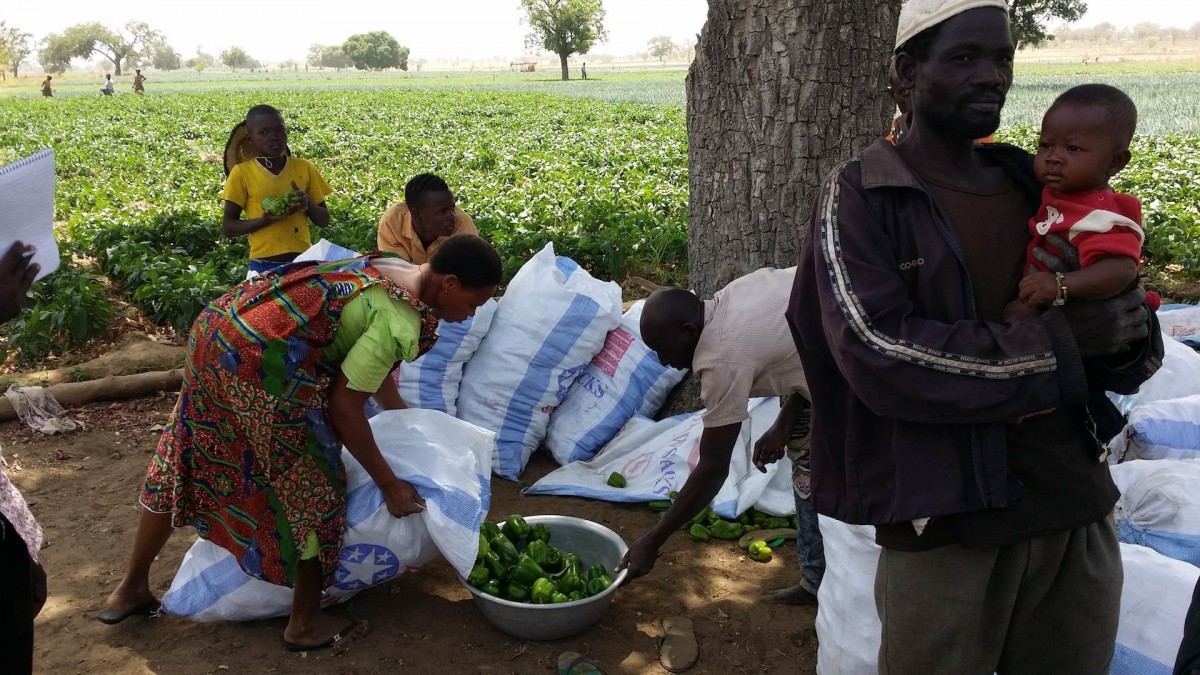The WLE Focal Regions (2014-2016) were an ambitious attempt to apply the fundamental underpinnings of WLE at scale: sustainable intensification of agriculture and substantive investment in gender in the Greater Mekong, Volta-Niger, Nile-East Africa and Ganges regions.
As the Focal Region Coordinator, I was excited to lead a program that was a departure from traditional research approaches. Instead, it started with the problem and worked backwards to design research that would directly impact challenges on the ground. This was part of a new way of working for CGIAR.
We explicitly invited new ideas, new connections and new interactions – the pre-requisites for incubating innovation. Out of the 33 projects, only 8 were led by CGIAR partners. In addition, these projects focused on localized and context-specific solutions that could potentially be replicated elsewhere. Finally, the projects were designed to investigate how to scale up and out sustainable intensification strategies beyond the farm plot – a precursor to what WLE is doing in its second phase.
Unfortunately, the program was plagued by funding cuts and only ran for two years so the impacts of the projects, both individually and collectively, were hard to evaluate. However, apart from developing an important, new process for designing research, the program also yielded exciting emerging impacts, some of which are highlighted below. Finally, some of the work started under the Focal Regions will be carried forward, both by WLE and by its partners.
Greater Mekong: Changing local perceptions on water governance
The Vietnam Delta is being hit by a triple threat: salt water intrusion due to climate change, decreasing sediment flows due to dam construction in Vietnam and the Mekong, and failed agriculture intensification policies.
The WLE Greater Mekong Program, which is co-funded by the Australian Department of Foreign Affairs and Trade (DFAT), has supported multi-institutional projects that explore how research can support real-world policy making at the local level.
The WLE project River food systems from villagers’ perspectives in the Mekong Delta led by a Vietnamese NGO, WARECOD, worked with farmers, researchers from Can Tho University, members of government agencies and people’s organizations, and Vietnam Television to document changes to the local environment and to water resources. The project worked with local people to plan ways of reversing the observed environmental degradation. By using a participatory research process, the project helped local communities understand their own role in managing water resources, specifically how the use of pesticides and disposal of rubbish can affect their long-term livelihoods. Special efforts were made to ensure the participation of women and ethnic minority groups in the research so that the findings would be widely known and understood by the various demographics in the area.
Early results have been encouraging. Farmers have adapted their livelihood strategies to include shrimp farming, which uses brackish water that fills the local canals with seasonal seawater rise. This low impact method allows farmers to grow rice when there is fresh water and switch to shrimp farming when there is salt water.

Volta: Recognizing the importance of gender in sustainable intensification
In the Volta Basin, a research project worked to evaluate how irrigation systems of various sizes contribute to enhancing rural livelihoods and gender and generational equity.
The focus was on how ecosystem services underpin irrigation systems, while examining how access to these systems can give women and youth a means to change their livelihoods. The project was a collaboration between the Women in Agricultural Development Directorate of the Ghana Ministry of Food and Agriculture, the Ghana Irrigation Development Authority (GIDA), the University for Development Studies, Ghana, and the International Water Management Institute.
Five training manuals were developed using the project’s assessments of farmer's needs for use by agricultural extension officers, NGOs and other community-based organizations.

Nile: Influencing large-scale investments
Special economic corridors are being developed in East Africa to attract foreign investment in land. But are these investments inclusive and sustainable?
The Southern Agricultural Growth Corridor of Tanzania (SAGCoT) was established to realize the region’s agricultural potential. However, with many new, large agribusinesses being established in the area, competition over water and land has increased. As such, it became necessary to identify mechanisms to ensure that smallholder farmers benefited from economic development.
The LifeLand project has worked directly with investors and other decision makers to provide insights and tools that can help navigate trade-offs and achieve sustainable, equitable development. Such outputs include guidelines on wetlands management, recommendations on gender inclusivity and a water allocation model.
The outputs were well received by the SACGoT Centre and other next users. One project member, Prof Japhet Kashaigili of Sokoine University of Agriculture (SUA), was asked to join the newly formed Ihemi Cluster Green Reference (IGRG) Group, a multi-stakeholder forum, to champion green agricultural growth in the Ihemi cluster.
Ganges: Restoring local water resources
The Ganges River provides life, sustenance and religious meaning to more than 700 million people.
However, water quality has drastic degraded over past decades, with problems related to water diversion for non-efficient irrigated agriculture and a daily discharge of more than two billion liters of untreated sewage into the river. The Namami Ganga program (National Mission for Clean Ganga [NMCG]), launched in 2014 by the current Indian government, has an allocated budget of over US$ 3 billion over 5 years and follows in the footsteps of a 30 year-long ecological battle to restore Ganges water quality, with mixed results. A project led by IWMI and WWF along with the NMCG analyzed different business models to improve sanitation in cities along the river.
It recommended investing in decentralized and in-situ sanitation solutions such as drain cleaning and co-composting of septage together with other organic wastes. These smaller scale efforts will cost much less than setting up a complex sewerage system and associated treatment plant, and will be easier to operate.
Shedding light on resilient transformation
These cases provide some examples of the fundamental shifts needed to move towards more resilient and sustainable agri-food systems.
First, technology alone will not allow for wide-reaching change. New tools have to be matched with institutional innovations, which provide the right policy and market incentives. The work in the SAGCoT region highlights the need to integrate recommendations and solutions into existing programs where large investments are taking place.
Second, there is a need to work directly with key stakeholders to address real world policy challenges. Almost all focal region projects worked with regional stakeholders to develop the projects and solutions together.
Finally, the focal region work demonstrated that it is extremely unlikely that sustainable outcomes can be achieved without major social and economic transformations. Given the important role of women in agriculture, this necessarily means working towards a high degree of gender equality in order to achieve real sustainable agricultural intensification.
Incubating innovative ideas and increasing the impact of projects requires significant resources, energy and commitment from donors and program managers. WLE was able to break new ground with the focal regions, and although the outcomes will take more time to emerge, the regional program added many important partnerships, ideas and lessons for the future of WLE and CGIAR.


